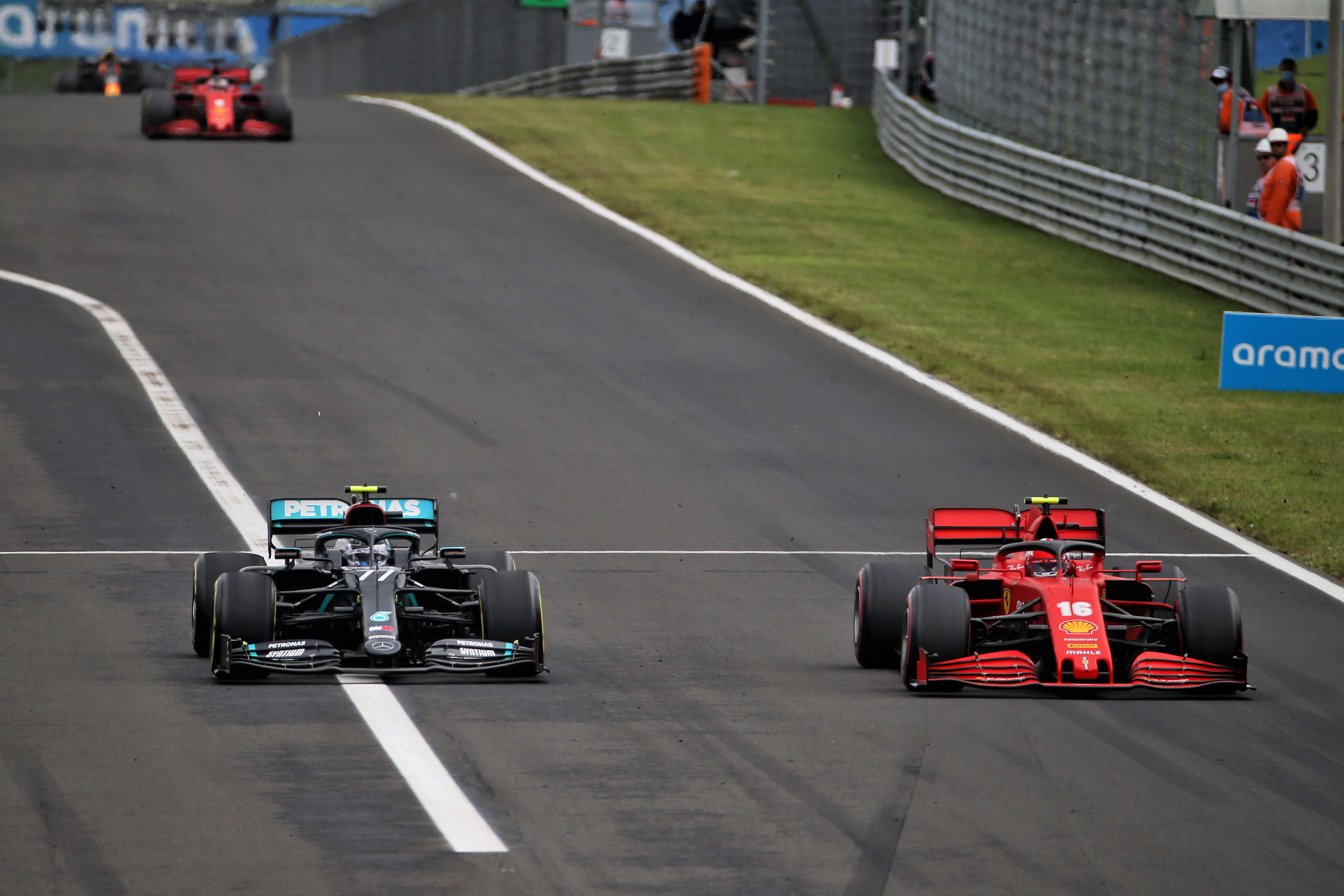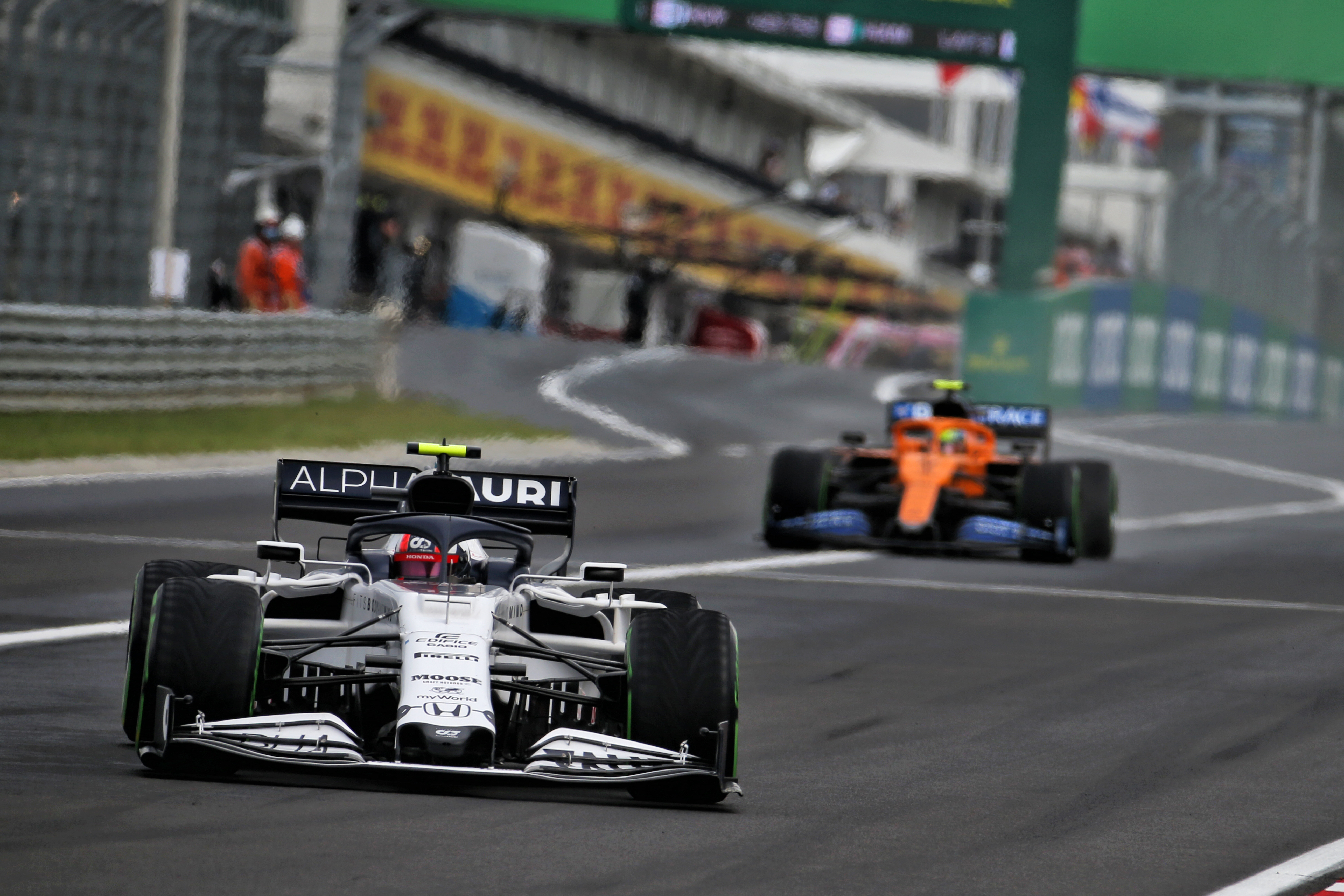Up Next

Lewis Hamilton has been giving everyone else – and I mean everyone – another lesson in how it should be done across the last two grands prix.
His qualifying lap in the wet at the Red Bull Ring last weekend was exceptional, his drives to the top step of the podium in Austria and in Hungary were phenomenal.
He seems to come back year after year just that little bit more prepared. Post-race, I would have to say that he has almost broken Valtteri Bottas, whose body language was that of a driver who just simply doesn’t know how to cope with this situation.
And there’s no opposition coming from outside the team, as Mercedes is a clear step ahead of all its rivals.
Amid Mercedes’ unstoppable success at the moment, its tension with Ferrari has continued rumbling through 2020’s opening races.
As Toto Wolff said, Ferrari’s performance in the first half of last season pushed Mercedes to dig deep to find solutions in response to its rivals gains only for whatever Ferrari was doing to be found to be questionable (even though it couldn’t be proved to be illegal).
In reality, Mercedes did find some extra engine performance, so it was a double whammy for Ferrari. By becoming fully legal (we hope), Ferrari lost performance and by being pushed Mercedes could find that little bit extra.
Needless to say, there is not much love lost between these two teams at the moment. Ferrari was slightly better in Hungary than it was in Austria but you would need to dig pretty deep to see why, where or by how much.

But it’s not just Mercedes and Ferrari where it’s fascinating to try to work out what contribution the engine is making to performance – or underperformance – overall. I’ve been taking a look at the speed trap data from the Hungary weekend and what it tells us.
SPEED TRAP ANALYSIS
I have taken a look at the top speeds from Hungaroring qualifying. These are simply the fastest speed set for each driver and I have compared the speed across the start/finish line and the speed at the speed trap at the end of the main straight (310 metres before Turn 1, to be precise) and then the speed delta between them.
As I am into the chassis more than drivers, I have taken the fastest driver across the start/finish line as each team’s ultimate potential as this is a consequence of the last-corner speed and acceleration onto the straight. This is what we get.
| Start/finish (km/h) | Trap Speed (km/h) | Delta (km/h) | |
| Racing Point (Perez) | 266.9 | 313.2 | 46.3 |
| Red Bull (Verstappen) | 266.4 | 310 | 43.6 |
| Mercedes (Bottas) | 265.6 | 312.5 | 46.9 |
| McLaren (Sainz) | 264.7 | 306.7 | 42 |
| Renault (Ricciardo) | 263.7 | 307 | 43.3 |
| AlphaTauri (Kvyat) | 263.3 | 307.5 | 44.2 |
| Williams (Russell) | 263.2 | 308.2 | 45 |
| Haas (Grosjean) | 262.6 | 306.4 | 43.8 |
| Ferrari (Leclerc) | 262 | 304.3 | 42.3 |
| Alfa Romeo (Giovinazzi) | 261.7 | 306.9 | 45.2 |
If we take all that and just look at the difference in speed between the two points, it gives us a clue on car drag and/or engine power as it’s focusing on how much straightline speed a car is gaining as it continues down the straight. So putting that in order we get the following ranking:
| Delta | Engine | |
| Mercedes (Bottas) | 46.9 | Mercedes |
| Racing Point (Perez) | 46.3 | Mercedes |
| Alfa Romeo (Giovinazzi) | 45.2 | Ferrari |
| Williams (Russell) | 45 | Mercedes |
| AlphaTauri (Kvyat) | 44.2 | Honda |
| Haas (Grosjean) | 43.8 | Ferrari |
| Red Bull (Verstappen) | 43.6 | Honda |
| Renault (Ricciardo) | 43.3 | Renault |
| Ferrari (Leclerc) | 42.3 | Ferrari |
| McLaren (Sainz) | 42 | Renault |
This is taken from one set of data from one track that requires a high downforce level, so we need to take it with a pinch of salt. But I’m pretty sure I can see a trend through it.
If you combined these numbers with the qualifying position, you could say that might just pinpoint a direction for development of both chassis and engine.
Mercedes is good on both. This is stating the obvious as it has three pole positions and three wins but it has done an exceptional job.
Racing Point is also strong on both elements but needs to get more consistency. Understanding the direction it has taken with this year’s car will help with that.
Alfa Romeo needs a dramatic increase in downforce. It just lacks grip and with the Ferrari engine it can’t make it up on the straights.
Williams needs more downforce but the efficiency of the car is pretty good, so stick with that efficiency level and get some more bits on the car.
For AlphaTauri, a bit more downforce wouldn’t go amiss. A bit like Williams, the car is reasonably efficient but needs more grip.

Haas again needs more downforce, but in its case more donkeys are also required.
Red Bull needs better efficiency. This lack of delta speed could come from running more downforce to compensate for the car being a bit nervous to drive.
As for Renault – more power please.
Ferrari needs more power, more downforce and greater efficiency. It needs a bit of everything.
McLaren shares Renault’s need for power. Its cars are fourth and fifth across the start finish line but eighth and 10th on delta speed increase, so downforce-wise not too bad but more will always help.
Silverstone is just around the corner and if the weather is favourable it’s a compromise circuit of downforce against drag.
With that in mind Mercedes should be in a world of its own. And Ferrari, unless it has a miracle up its sleeve, will struggle more than it has done so far this year.





